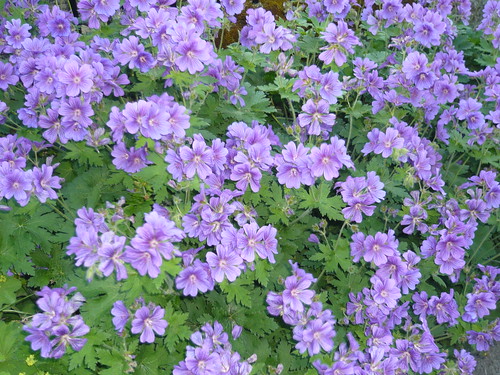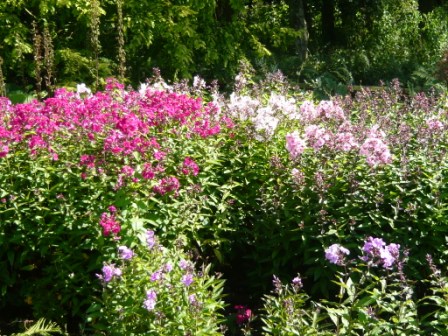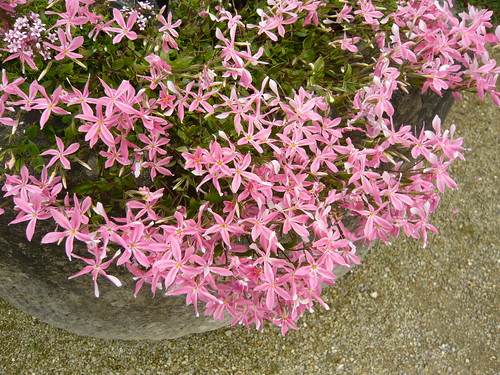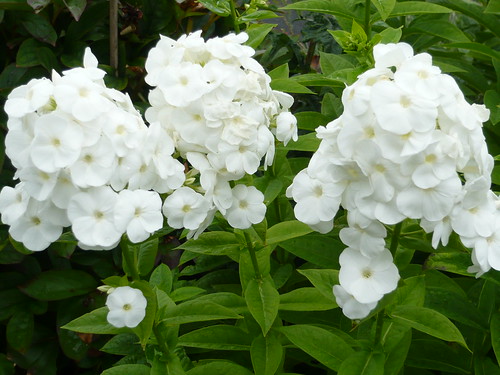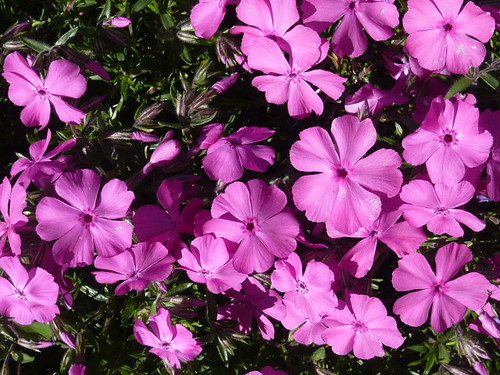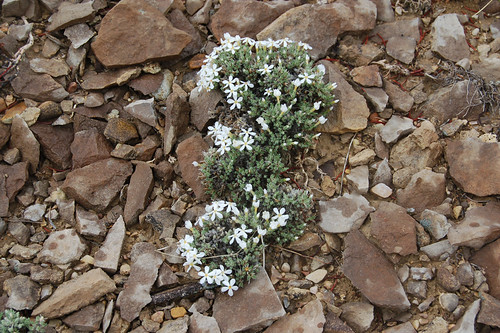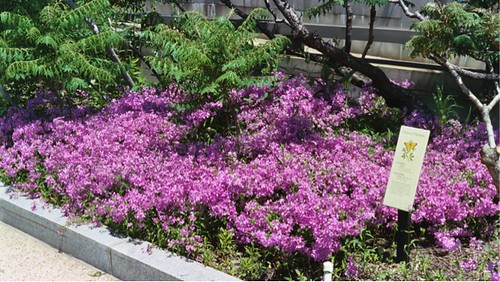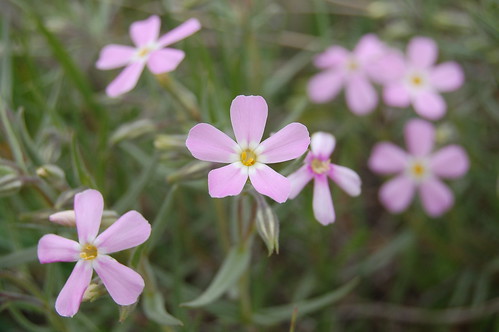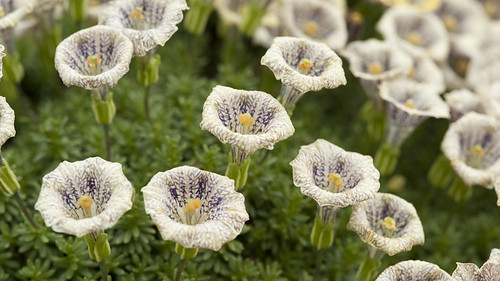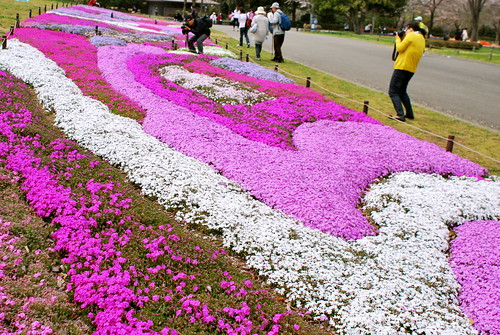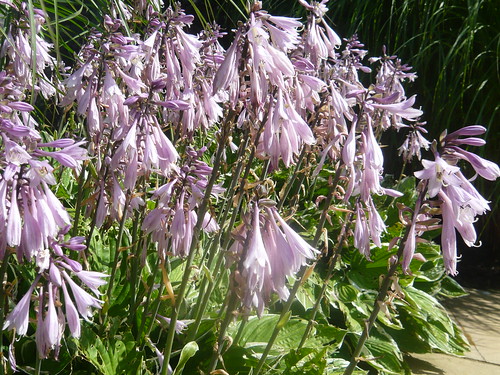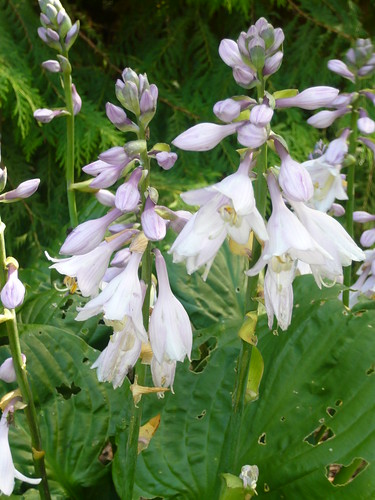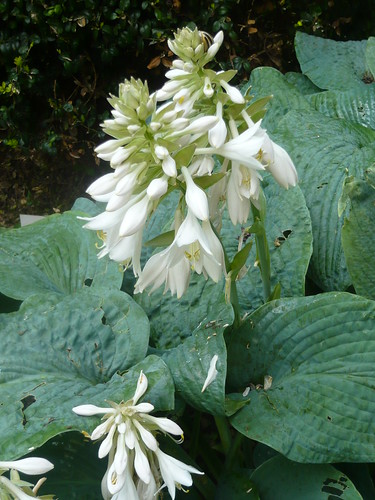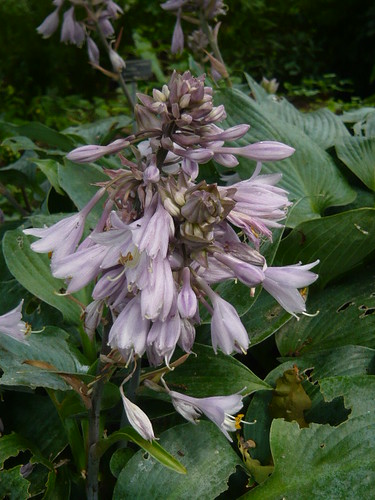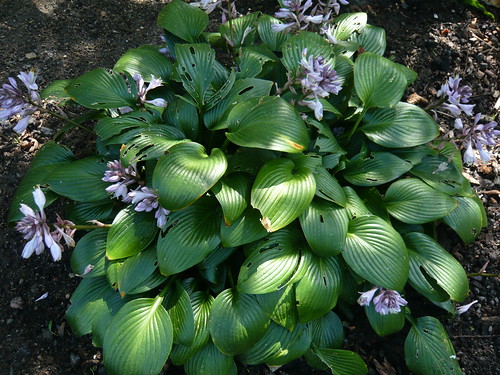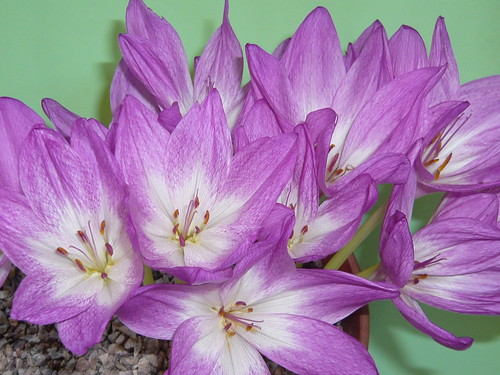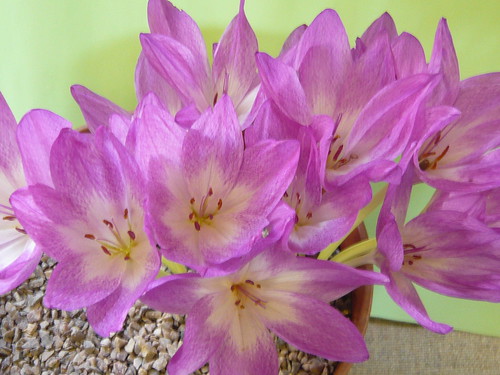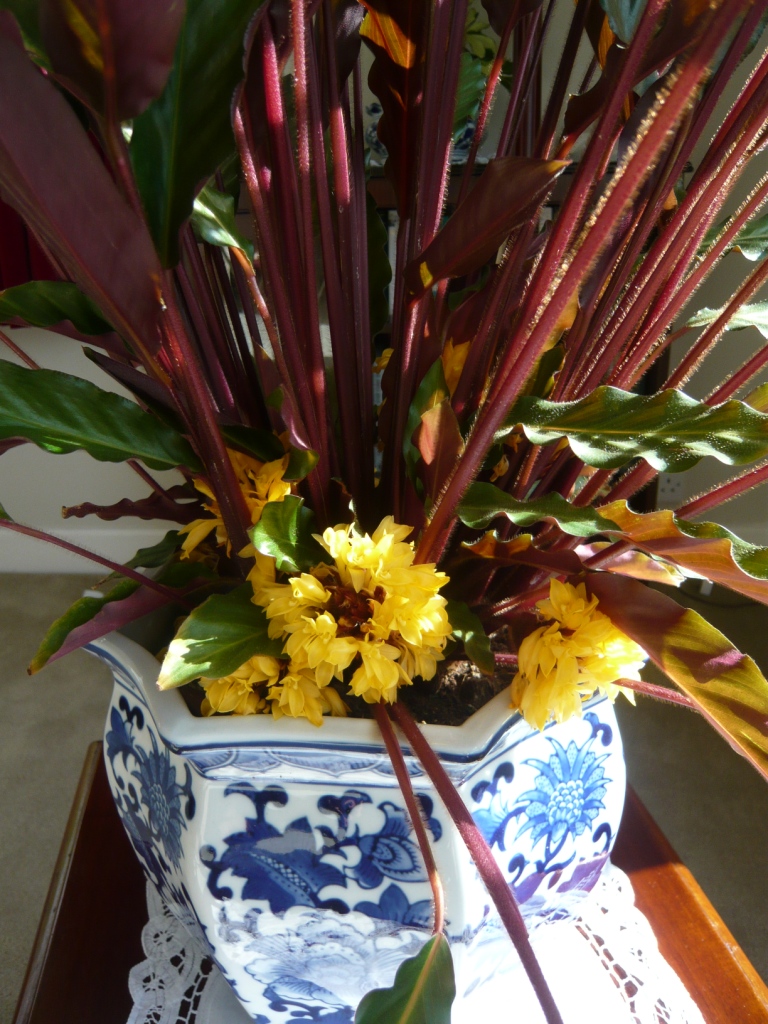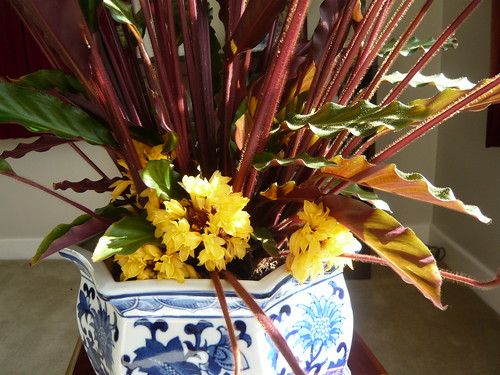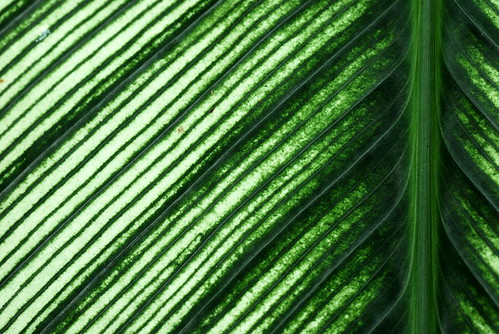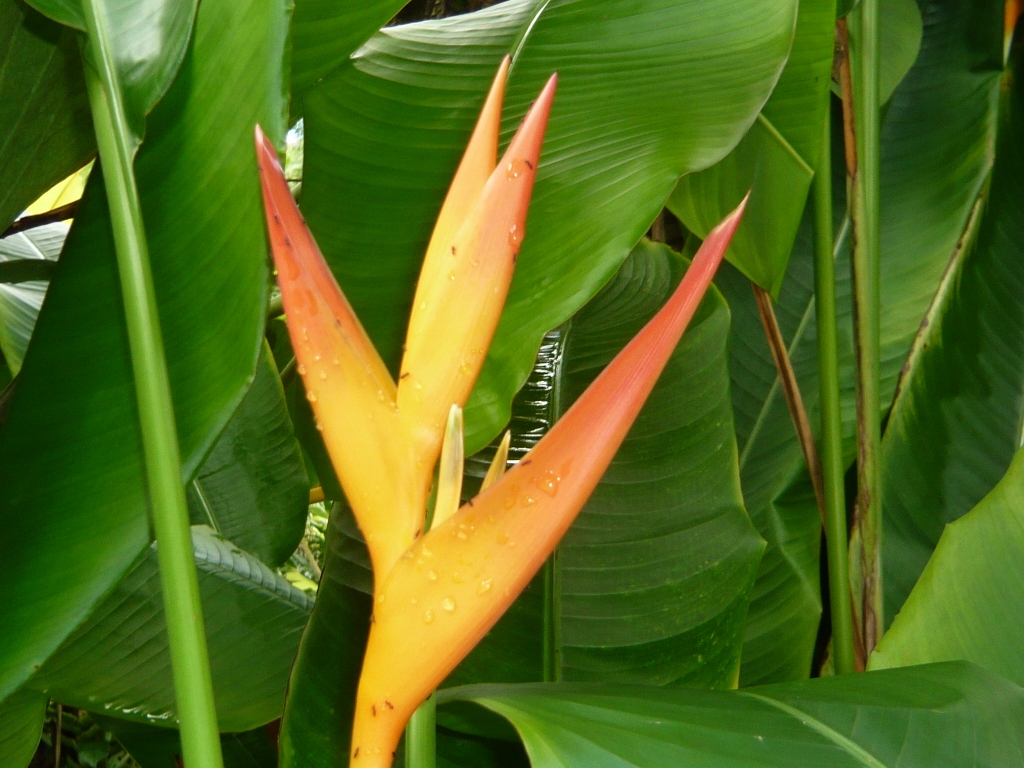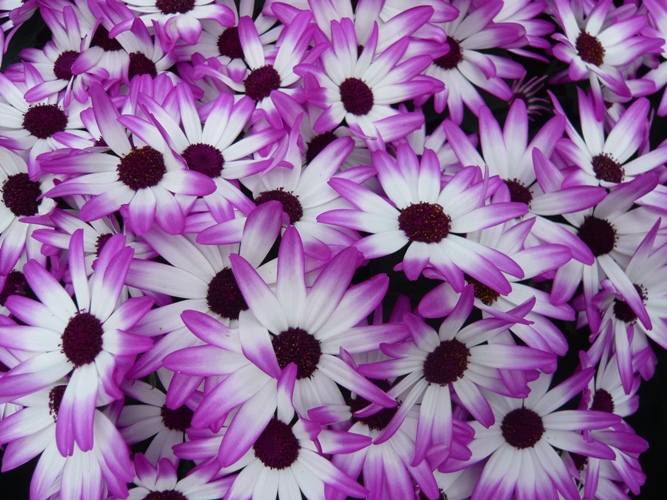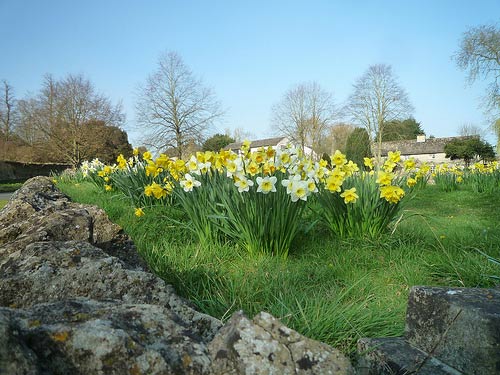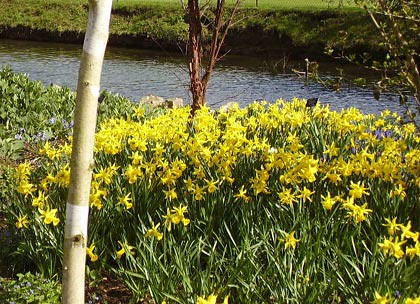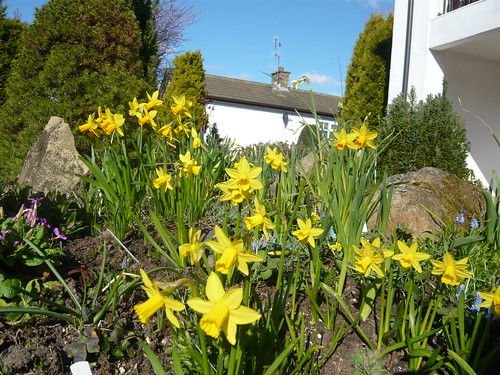I was convinced my latest photos were of Strelitzia or Bird of Paradise flowers – that was until the horticulturalists at Kew Gardens made me rethink.
I had never come across the Parrot flower until I saw the Kew photo below and now I realise how ornithologically challenged I am.
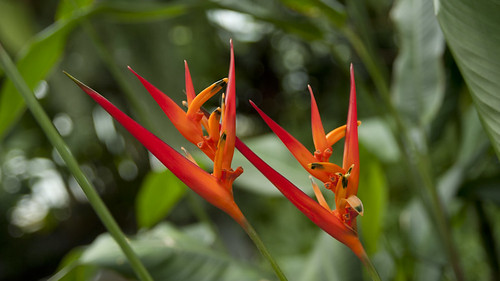
I love going to the Palm house at Kew where this photo was taken by their staff.
The variety of plant life hints at what you could discover in better weather conditions than we experience in the UK.
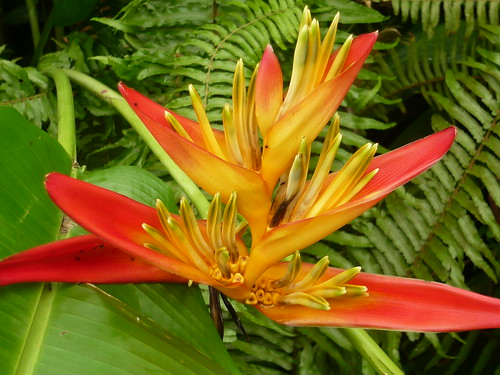
These Cornish flowers were also under glass in the tropical dome at the Eden project.
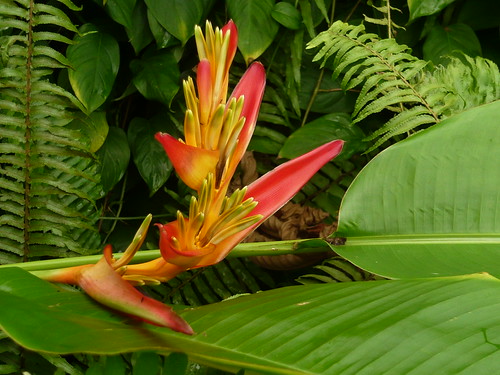
Strelitzia – Bird of Paradise Species
Strelitzia alba White bird of paradise
Strelitzia caudata Mountain Strelitzia
Strelitzia nicolai White or Giant bird of paradise;
Wild banana or Blue and white Strelitzia
Strelitzia reginae Bird of paradise, or Crane lily
Strelitzia juncea African desert banana
S. × kewensis hybrid between S. reginae and S. augusta (alba)
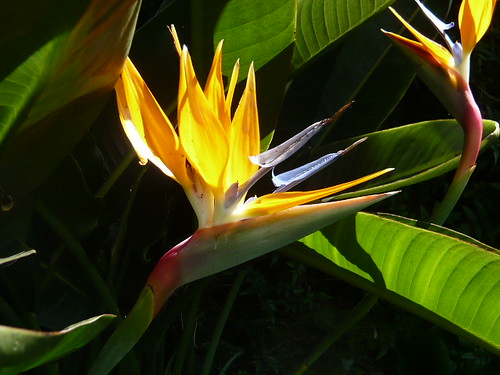
Checking my old holiday photos I found this Strelitzia which threw my identification skills into question.
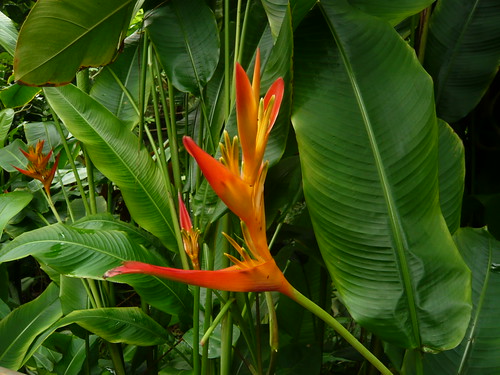
These leaves look like banana leaves but the flowers fall short of Paradise.
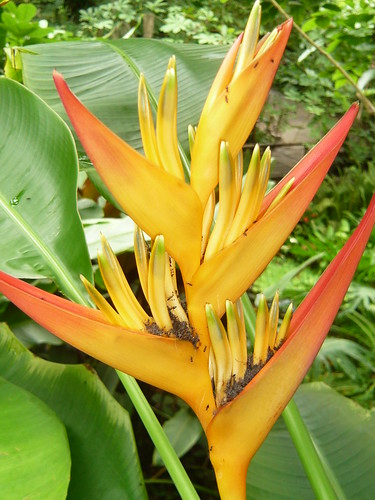
Insects are having a good lunch on this flower photo.
Photo Credits.
Parrot’s flower in the Palm House by Kew on Flickr CC BY-NC-SA 2.0 ‘This parrot’s flower, Heliconia psittacorum, was collected in Brazil in 1974. Find its striking orange flowers in the Palm House.’
Heliconia platystachys (multiple flowers) CC BY-NC-SA 2.0
Our photos from the Eden Project Cornwall

When you start looking there are Parrots everywhere!
There are over 100 species of Heliconia found in rainforests or tropical wet forests where they are sometimes referred too as False Bird of Paradise flowers.
